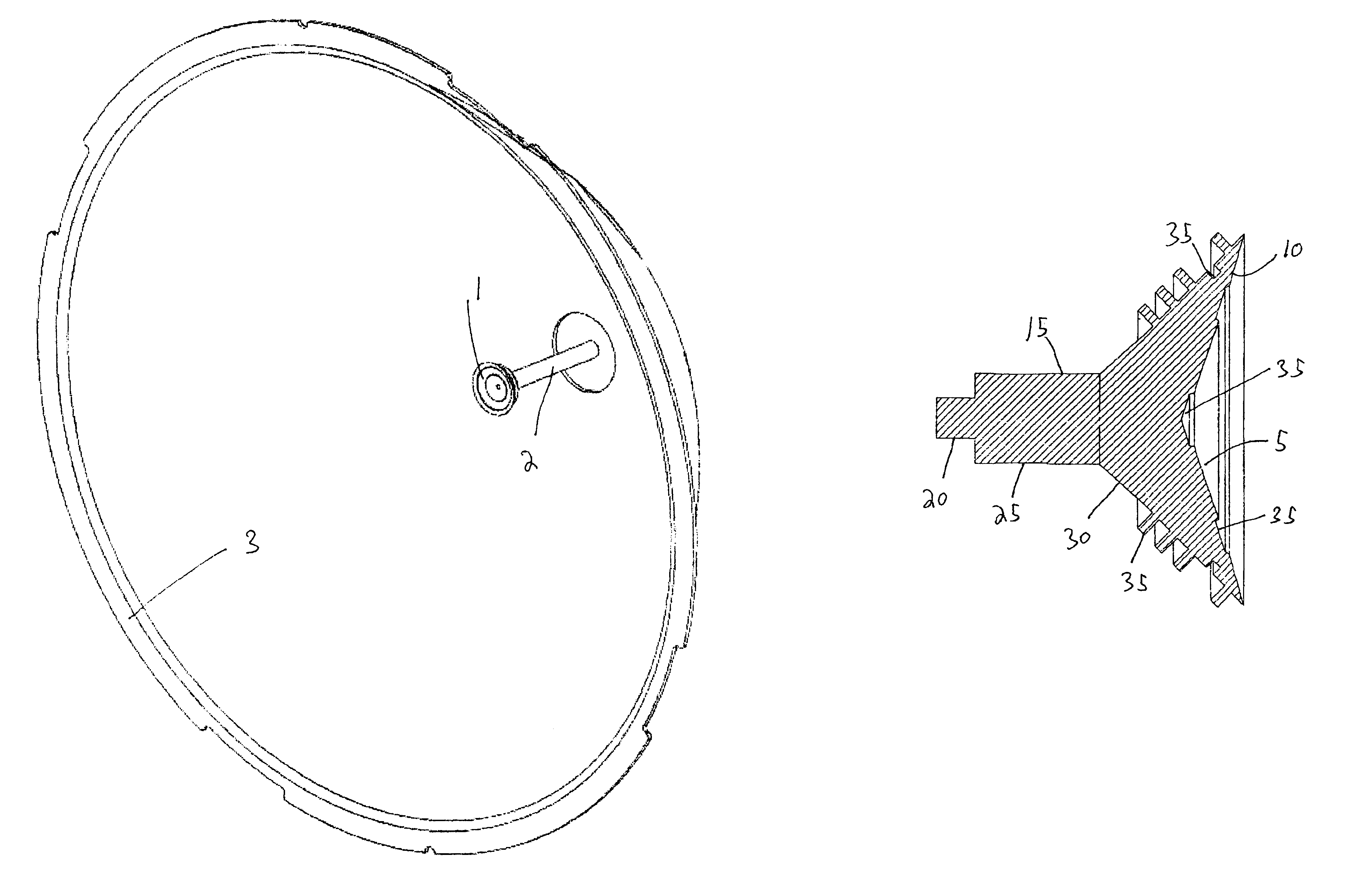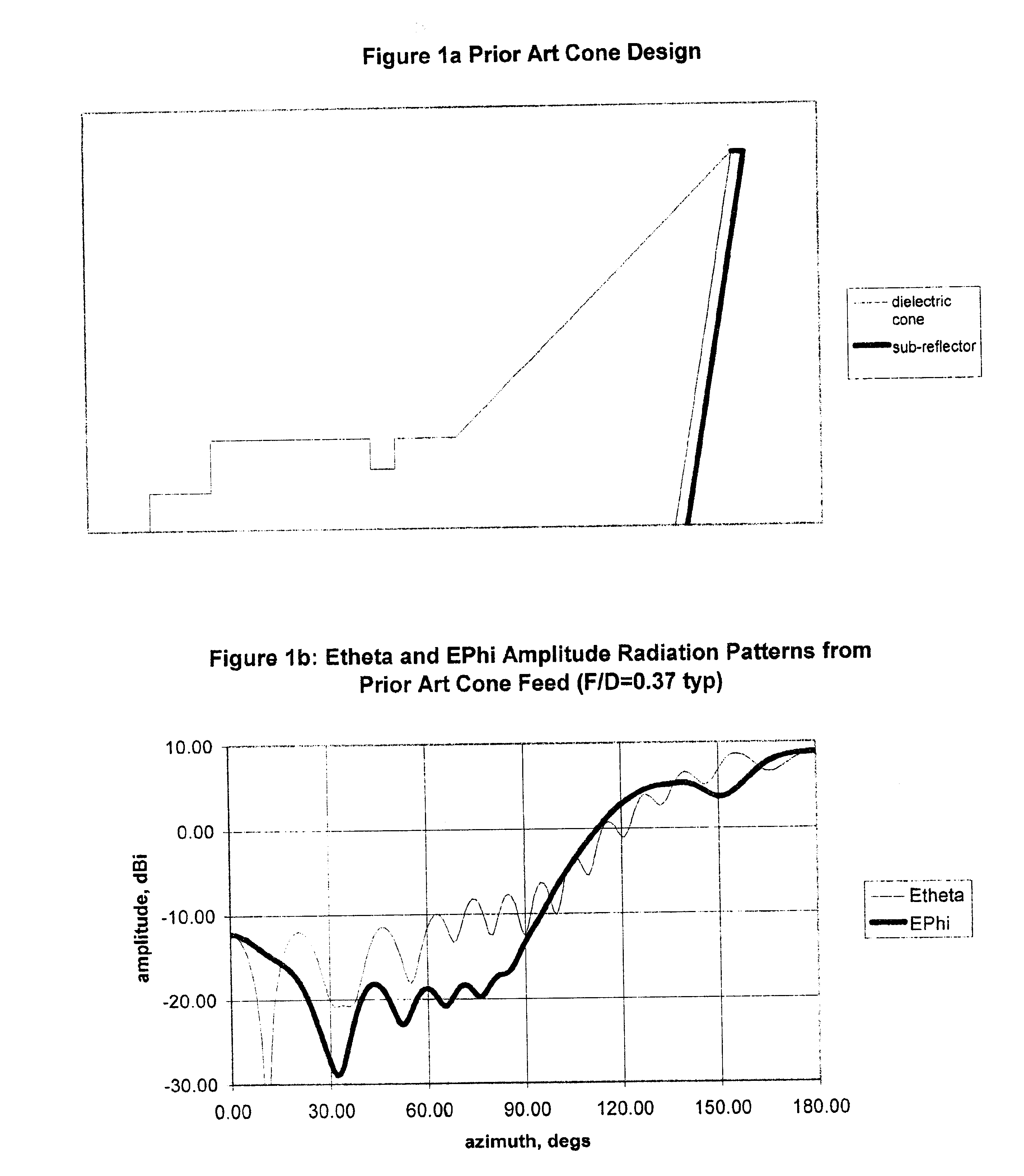Tuned perturbation cone feed for reflector antenna
a reflector antenna and cone feed technology, applied in the direction of antennas, waveguide horns, electrical equipment, etc., can solve the problems of introducing some loss in operating efficiency, increasing the overall weight of the shield, wind load, structural support and manufacturing costs of the antenna, and affecting the effect of the
- Summary
- Abstract
- Description
- Claims
- Application Information
AI Technical Summary
Benefits of technology
Problems solved by technology
Method used
Image
Examples
Embodiment Construction
[0055]The self-supported feed system described herein integrates the waveguide transmission line, aperture and sub-reflector into a single assembly comprising a length of waveguide, the aperture of which is terminated with a corrugated dielectric cone sub reflector assembly, the front and back surfaces of which are geometrically shaped and corrugated to provide a desired amplitude and phase radiation pattern suitable for efficient illumination of the main reflector profile.
[0056]A typical dual reflector antenna according to the invention is shown in FIGS. 4a and 4b. The sub-reflector assembly 1 is mounted on and supported by a waveguide 2 to position the sub-reflector assembly 1 proximate a focal point of the dish reflector 3, here shown as a dish reflector 3 having a “deep dish” configuration.
[0057]Details of the sub-reflector 1 assembly according to the invention will now be described in detail. A first embodiment of a sub-reflector 1 according to the invention is shown in FIGS. 5...
PUM
 Login to View More
Login to View More Abstract
Description
Claims
Application Information
 Login to View More
Login to View More - R&D
- Intellectual Property
- Life Sciences
- Materials
- Tech Scout
- Unparalleled Data Quality
- Higher Quality Content
- 60% Fewer Hallucinations
Browse by: Latest US Patents, China's latest patents, Technical Efficacy Thesaurus, Application Domain, Technology Topic, Popular Technical Reports.
© 2025 PatSnap. All rights reserved.Legal|Privacy policy|Modern Slavery Act Transparency Statement|Sitemap|About US| Contact US: help@patsnap.com



